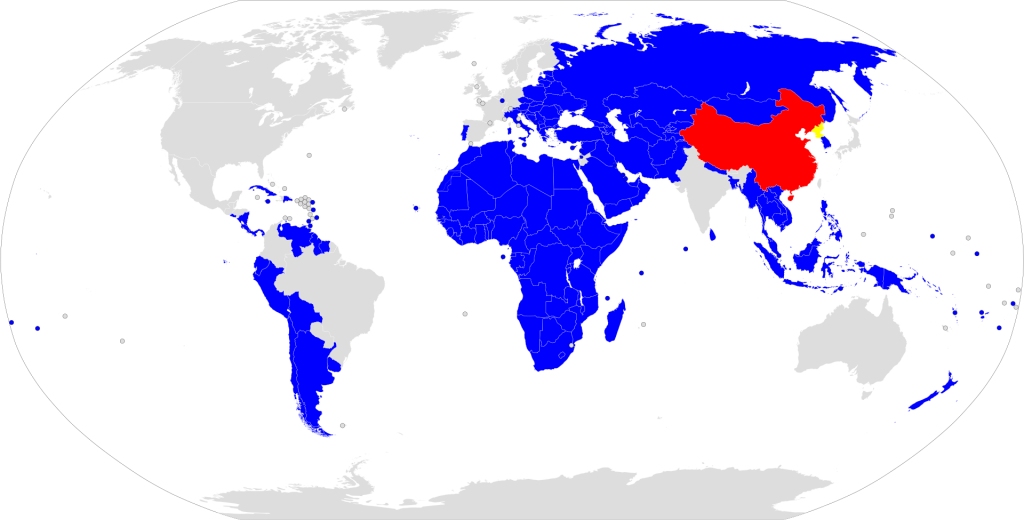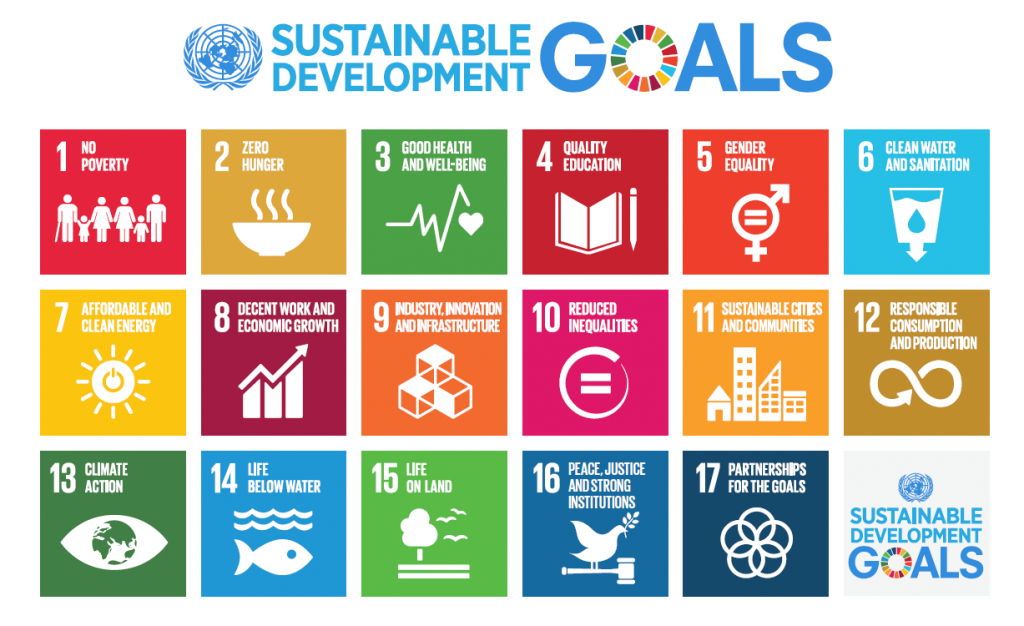The Belt and Road Initiative (BRI) is a massive infrastructure development project initiated by China in 2013. It aims to enhance connectivity and cooperation between Asia, Europe, Latin America and Africa through the construction of roads, railways, ports, and other infrastructure projects.
The initiative covers 151 countries and has the potential to benefit more than 60% of the world’s population. It is considered the most extensive infrastructure project in history, with an estimated cost of over $4 trillion. The BRI is expected to generate significant economic growth, promote regional integration, and increase trade and investment among participating countries.
In this article we provide an overview of the Belt and Road Initiative, its objectives and examples of benefits for participating countries.
Overview of the Belt and Road Initiative
The Belt and Road Initiative is a global development strategy initiated by the Chinese government in 2013. It aims to create a vast network of transportation and infrastructure projects, including railways, highways, ports, airports, and pipelines, connecting China with countries in Asia, Europe, and Africa. The initiative is based on the ancient Silk Road, which connected China to the rest of the world for trade and cultural exchange. As of January 2023, 151 countries were listed as having signed up to the Belt and Road Initiative.

The BRI is divided into two main components: the Silk Road Economic Belt and the 21st Century Maritime Silk Road. The Silk Road Economic Belt connects China with Central Asia, Russia, and Europe, while the 21st Century Maritime Silk Road links China with Southeast Asia, South Asia, the Middle East, and Africa.
The BRI has three main objectives: promoting economic cooperation, enhancing regional connectivity, and encouraging cultural exchange. The initiative aims to generate significant economic growth by increasing trade and investment among participating countries. It also seeks to enhance regional connectivity by creating a network of infrastructure projects that can facilitate the movement of goods, services, and people. Finally, the BRI aims to promote cultural exchange and mutual understanding by encouraging people-to-people exchange and cooperation.
The BRI is expected to generate significant economic benefits for participating countries. The initiative has the potential to create new markets, increase investment, and generate employment opportunities. The BRI is also expected to promote regional integration and reduce trade barriers among participating countries. This can lead to increased trade and investment, lower transportation costs, and improved market access.
While the perception could be that this is only a Chinese project, in fact, the BRI is not just a Chinese initiative; it is a global one. The initiative has attracted the interest of many countries, including those in Asia, Europe, and Africa. Many countries have joined the initiative as they see the potential benefits of increased connectivity and cooperation. The BRI is also seen as a way to promote global economic growth and reduce poverty.

To conclude, the Belt and Road Initiative is a massive infrastructure development project that aims to promote economic cooperation, enhance regional connectivity, and encourage cultural exchange. The initiative is expected to generate significant economic benefits for participating countries and promote global economic growth.
What are the objectives of the Belt and Road Initiative?
The Belt and Road Initiative has three main objectives: promoting economic cooperation, enhancing regional connectivity, and encouraging cultural exchange. These objectives are interconnected and aim to create a more prosperous, collaborative and connected world.
The following is an overview of the BRI’s objectives:
Promoting Economic Cooperation
The Belt and Road Initiative aims to promote economic cooperation among participating countries. The initiative creates opportunities for trade and investment, reduces trade barriers, and promotes regional integration. The BRI also aims to enhance cooperation among different industries, such as finance, energy, and telecommunications. These measures can create new markets, generate employment opportunities, and stimulate economic growth.
Enhancing Regional Connectivity
The BRI aims to enhance regional connectivity by creating a vast network of transportation and infrastructure projects. The initiative includes the construction of railways, highways, ports, airports, and pipelines. Improved connectivity can make it easier for goods, services, and people to move between participating countries and regions. This can lead to increased trade, investment, and economic growth.
Encouraging Cultural Exchange
The BRI aims to encourage cultural exchange and mutual understanding among participating countries. The initiative creates opportunities for people-to-people exchange, such as cultural festivals, student exchange programs, and joint research projects. These activities can promote understanding and tolerance among different cultures and religions.
The BRI’s objectives are not only focused on economic growth and infrastructure development but also aim to promote cooperation and understanding among participating countries. The initiative recognizes that economic development cannot be achieved without social and cultural development.
The BRI’s objectives are in line with the United Nations Sustainable Development Goals (SDGs). The SDGs aim to eradicate poverty, promote economic growth, and protect the environment. The BRI can contribute to achieving these goals by promoting economic development, reducing poverty, and creating a more sustainable world.

Overall, the Belt and Road Initiative aims to promote economic cooperation, enhance regional connectivity, and encourage cultural exchange. The initiative creates new opportunities for trade and investment, promotes regional integration, and reduces trade barriers.
Benefits of the Belt and Road Initiative
The Belt and Road Initiative has the potential to generate significant economic benefits for participating countries. The initiative aims to promote economic cooperation, increase trade and investment, and improve market access.
The following are some of the benefits of the BRI:
- Enhanced connectivity: The BRI aims to create a vast network of transportation and infrastructure projects, including railways, highways, ports, airports, and pipelines. This network can enhance connectivity among participating countries and regions, making it easier for goods, services, and people to move between them. Improved connectivity can lead to increased trade, investment, and economic growth.
- Increased investment: The BRI aims to attract more investment from participating countries and international organizations. The initiative creates opportunities for investment in infrastructure projects, such as railways, highways, and ports. Increased investment can create new markets, generate employment opportunities, and stimulate economic growth.
- New markets: The BRI creates new markets for participating countries by promoting trade and investment. The initiative aims to reduce trade barriers, promote regional integration, and enhance market access. These measures can create new opportunities for companies to expand their operations and increase their market share.
- Regional integration: The BRI promotes regional integration by creating a network of infrastructure projects that can facilitate the movement of goods, services, and people. This can lead to increased trade, investment, and economic growth. Regional integration can also help reduce conflict and promote peace and stability.
- Poverty reduction: The BRI aims to promote economic growth and reduce poverty. The initiative creates new opportunities for investment, employment, and economic development. It also promotes infrastructure development in poorer regions, which can improve access to education, healthcare, and other essential services.
- Cultural exchange: The BRI promotes cultural exchange and mutual understanding by encouraging people-to-people exchange and cooperation. The initiative creates opportunities for cultural exchange, such as cultural festivals, student exchange programs, and joint research projects. These activities can promote understanding and tolerance among different cultures and religions.
The Belt and Road Initiative has the potential to generate significant economic benefits for participating countries. The initiative promotes economic cooperation, enhances connectivity, and encourages cultural exchange. The BRI creates new opportunities for investment, trade, and economic growth, and can help reduce poverty and promote regional integration.
By doing the above, the initiative creates a unique opportunity for countries to work together to create a more prosperous and connected world.
Belt and Road Initiative success stories
The Belt and Road Initiative has several success stories that demonstrate the initiative’s potential to promote economic growth and regional integration.
The following are some examples of successful BRI projects:
- Djibouti International Free Trade Zone: The Djibouti International Free Trade Zone is a major industrial park located in the Horn of Africa. The park was built with Chinese investment as part of the BRI. The park has already attracted investment from several countries and has created jobs and economic opportunities for the local community.
- Budapest-Belgrade Railway: The Budapest-Belgrade Railway is a high-speed rail project connecting Hungary and Serbia. The project was completed with Chinese investment as part of the BRI. The railway improved the connectivity between Hungary and Serbia, strengthen their economic ties, and boosted trade and investments.
- Poland’s Silesian Province: The Silesian Province in Poland has seen significant investment from China as part of the BRI. The region has attracted Chinese companies in the automotive, logistics, and construction sectors, creating thousands of jobs and promoting economic growth.
- China-Pakistan Economic Corridor (CPEC): The CPEC is a major infrastructure project that aims to connect Pakistan’s Gwadar Port with China’s northwestern region. The project includes the construction of highways, railways, and energy infrastructure. The CPEC has already created jobs, attracted investment, and improved connectivity between China and Pakistan.
- Gwadar Port, Pakistan: The Gwadar Port is a deep-sea port located in southwestern Pakistan. The port was built with Chinese investment as part of the CPEC, a major infrastructure project under the BRI. The port has already become a hub for trade and commerce and is expected to contribute significantly to Pakistan’s economic growth.
- Addis Ababa-Djibouti Railway: The Addis Ababa-Djibouti Railway is a new railway line connecting Ethiopia and Djibouti. The project was completed with Chinese investment as part of the BRI. The railway has improved connectivity between Ethiopia and Djibouti and has already created jobs and economic opportunities for the local communities.
These success stories demonstrate the potential of the Belt and Road Initiative to create economic opportunities and growth, enhance regional connectivity, promote regional integration, and encourage cultural exchange.
Summary
To summarize, the Belt and Road Initiative presents significant opportunities for economic growth, regional integration, and cultural exchange. The initiative’s objectives aim to promote international cooperation and create a more connected world.
The BRI is a unique opportunity for countries to work together. By promoting economic development, reducing poverty, and creating a more sustainable world, the initiative aligns with the United Nations Sustainable Development Goals. Finally, the BRI’s success will depend on the commitment and cooperation of participating countries, investors, and other stakeholders.
Join EECN
If you are involved in business practices with Estonia or China, or interested in Chinese or Estonian business, culture or cooperation, the Estonian-Chinese Chamber of Commerce is an organization to join.
Here you can find the top reasons why you should become a member and easily apply.